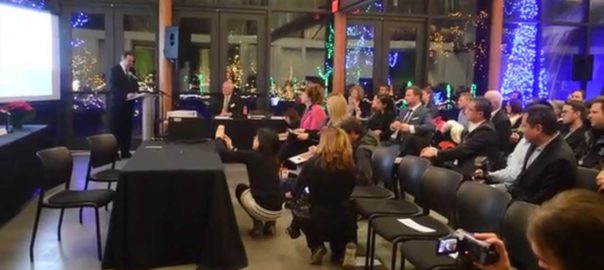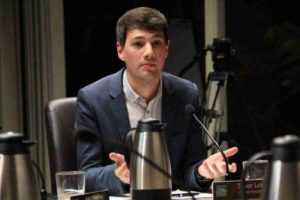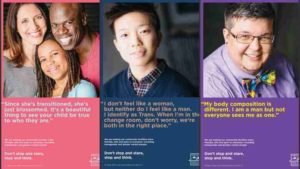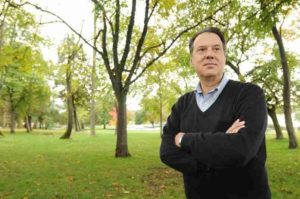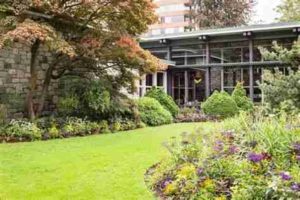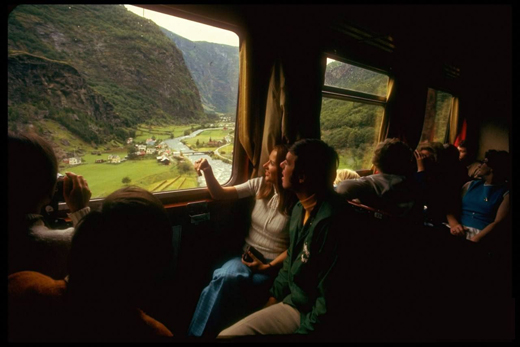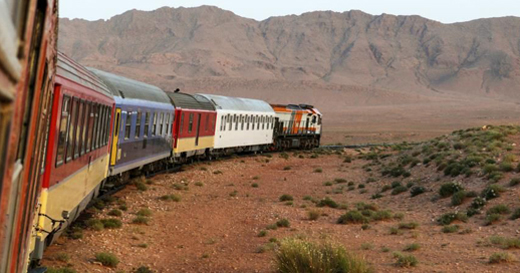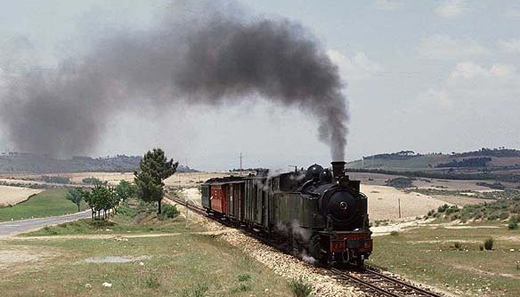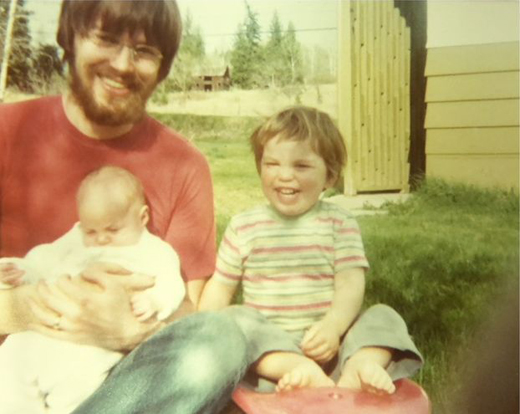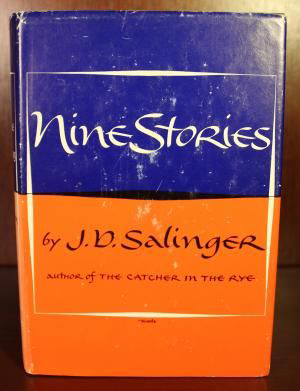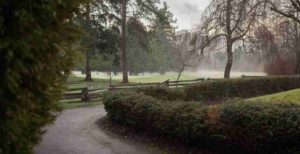
In 2012, Vancouver Mayor Gregor Robertson opined about the idea of scaling back Langara Golf Course and turning part of it into residential housing as part of the city’s broad new approach toward creating denser neighbourhoods.
“At this point it is debatable as to whether that is valuable green space,” the mayor said. “The public can’t access it, it is not biodiverse ,” as he went on to suggest that Langara is “underused”, that there may be “opportunities to transform that space, to maintain golf on that site, to increase public access, to increase public housing.”
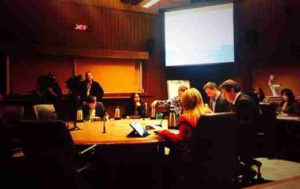
Pictured: Park Board Commissioners Melissa De Genova, John Coupar, Aaron Jasper, Constance Barnes, Niki Sharma & Trevor Loke. Commissioner Sarah Blyth had stepped out for a moment, during a break.
On July 9, 2012, the Vancouver Park Board met to consider the instruction of Mayor Gregor Robertson to “hive off half of Langara Golf Course for the development of low cost condominiums.”
City Manager Penny Ballem and Mayor Robertson’s Chief of Staff Mike Magee had, previous to the meeting, called in Vision Vancouver Park Board Commissioner Aaron Jasper to City Hall to demand he move a motion to redevelop the Langara Golf Course, in order that the Mayor’s wishes might be realized, that half of the golf course would be developed for housing.
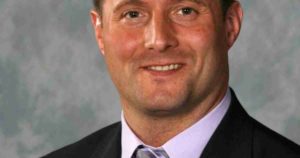
Vision Vancouver Park Board Commissioner, Aaron Jasper, set to carry out the wishes of the Mayor
Subsequent to Aaron Jasper’s meeting with Ballem and Magee, in an interview with the media, Jasper suggested that the course could be downsized from 18 holes to nine holes, which would free the land for public park space.
Alternatively, Jasper pointed out that the course could be eliminated altogether to develop a full park in its place. Golfers would be redirected to the city’s two other golf courses, McCleery and Fraserview.
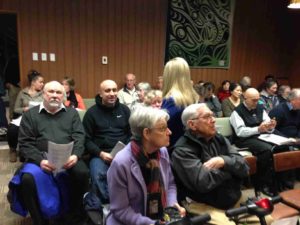
One hundred and fifty irate, activist members of the community turned up at the contentious July 9th meeting of Park Board — spanning every age group, from young pre-adolescent children to seniors, with members of the cultural and ethnic mosaic of the Vancouver well-represented among those who had gathered to oppose Mayor Robertson’s “vision” for a redeveloped Langara Golf Course.
More than two dozen speakers slammed the Vancouver Park Board that cool, mid-summer Monday evening, fearing they said that the city-owned Langara golf course might be changed into a park or affordable housing.
Many speakers, as well as Commissioner John Coupar, said they feared the motion to ask staff to compile usage and revenue figures for the city’s golf courses might be the first step toward turning Langara into a park or residential development.
“The way this has been rolled out, I think is a little scary,” Coupar said of the motion, which came after Mayor Gregor Robertson publicly questioned whether Vancouverites are best served by a golf course in the area.
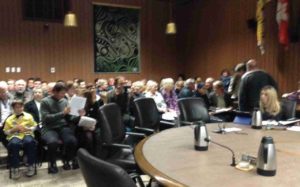
The first speakers to present to the Park Board Commissioners that evening were two 23-year-old women of Chinese descent, who said the following after introducing themselves …
“The two of us grew up in the area surrounding the Langara Golf Course. We grew up in some degree of poverty, living a kind of hand-to-mouth existence. Our parents each ran business, one a small corner store, the other a dry cleaning business. We were often left to our own devices, alone, without much to do. This was in an age prior to social media, when cell phones — which we couldn’t have afforded anyway — were not a feature of life.
With the Langara Golf course nearby, and given that it was the only green space in the neighbourhood, we took to walking around the trails that surround the golf course. Soon, we were running around the golf course, and over the years, from age six through our teens, we continued to run around the trails surrounding Langara. Over time, our running skills were strengthened, we joined the track team at our high school, and not long soon after we were recommended by our PhysEd teachers to the Canada Olympic Committee.
Long story short, the both of us became Olympic gold medal winning runners at the 2008 Summer Olympics in Beijing. Later this month, we will both be competing again at the London Summer Olympics.
Were it not for the opportunity we were afforded to, over many, many years, to run around the track surrounding the Langara Golf Course, we most certainly would not have become Olympic gold medal winners. Langara is a critical resource to families like ours, a welcoming green space like no other. We do not want to see the Langara Golf Course developed into condominiums.
With all due respect to the Mayor, we are present here tonight to speak against the initiative moved by Commissioner Jasper, on behalf of Mayor Gregor Robertson.”
At the conclusion of the address of the two accomplished young women, applause broke out. Observers, and Park Board staff and Commissioners, could well see that the 150 members of the community who had arrived at the Park Board offices to oppose the initiative of the Mayor to develop the Langara Golf Course were heartened and moved by what they’d heard. A new feeling of hope permeated the room.
The next speakers up were two UBC climate scientists who spoke about climate change, making the case for the preservation of the Langara Golf Course …
“In its present form, as the ‘lungs of our city’, as a health resource for citizens not simply because of the recreational resource it provides, but for the vital role Langara plays in addressing the role of climate change in our city, preservation of the Langara Golf Course must be seen as a paramount consideration.”
The scientists were followed by a groups of baby boomer, Gen X and millennial age women who spoke about the safety that they were afforded in their daily walks on the trails surrounding Langara. “There are always eyes on us. We feel safe. Langara in its present form is an invaluable resource for us. Please do not develop the site.”
Next up: groups of young boys and girls, and seniors, who spoke about their love for golf, about how they could never afford the hundreds and thousands of dollars that would be required to join a private golf course, but that for as little as seven dollars they could afford several hours of play on the Langara Golf Course.
“Better that we should be outside and in the environment,” they averred, “than at home watching TV, or playing video games.”
And with that, the speakers / intervenors / community input portion of the Park Board Committee meeting drew to a close.
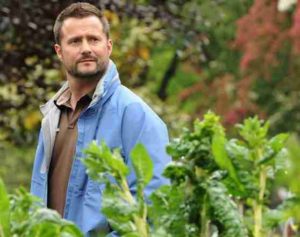
Aaron Jasper, Chairperson, Vancouver Park Board, 2012
During the course of the evening, several speakers who had presented to the Commissioners made mention of the fact that the Langara Golf Course was usable only six months of the year. Given the poor / virtually non-existent drainage on the course, users could not play the course when the autumn rainy season began, through the end of March, and sometimes April.
Without asking for remedy to such, Aaron Jasper had the following to say …
“I would like to make a motion asking staff to report back to the Board this upcoming early autumn, with recommendations and costing of installing a proper drainage system within the Langara golf course, such that the course might be used year-round. I would ask for the unanimous support from the Board for the motion I will put on the table.”
Aaron Jasper’s motion passed unanimously.
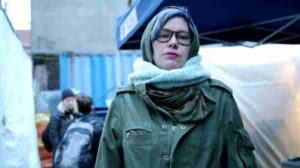
Sarah Blyth, multi-term Commissioner on the Vancouver Park Board
In a conversation VanRamblings had with former, multi-term Vision Vancouver Park Board Commissioner Sarah Blyth earlier this week, she told us the following …
“From time to time, my Vision Park Board colleagues and I found ourselves in conflict with the Mayor, with city staff and our Vision colleagues on Council. Never once, though, were we bullied by the City Manager or the Mayor’s Chief of Staff, and most certainly not by our elected Vision colleagues on City Council.
The Mayor and the Vision Councillors realized that we had been elected by voters to fulfill a mandate to preserve, protect and enhance Vancouver’s parks and recreation system, and to work on behalf of all the citizens of our city to maintain the best parks and recreation system on the continent.”
Did Aaron Jasper, and his Vision Vancouver colleagues on the Park Board, follow the “instruction” of Penny Ballem and Mike Magee to pass a motion that would lead to the halving, at best, of green space on the Langara golf course? No, no, they did not. Instead, as it turned out, in the autumn of that year, the Board unanimously approved a motion from Mr. Jasper to have installed a new drainage system — at a cost of $4 million — on the Langara golf course property, allowing golfers to use the course year-round, more than doubling the revenue derived from Langara, easily “repaying” the initial $4 million restoration expenditure.
And what was the political fallout for Vision Vancouver Park Board Commissioners Aaron Jasper, Trevor Loke, Sarah Blyth, Niki Sharma and Sarah Blyth?
Nada, zero, zilch.
The Vision Vancouver Commissioners on Park Board continued on representing the best interests of the citizens of Vancouver, unscathed and much admired.
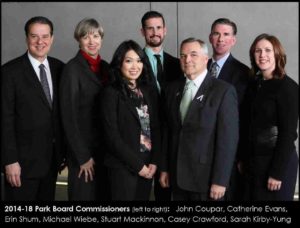
At the conclusion of the 2014 Vancouver civic election, as the incumbent Vision Vancouver Commissioners chose not to seek another term, Vision Park Board candidate Catherine Evans topped the polls, on a newly reconstituted Vancouver Park Board that saw Michael Wiebe and Stuart Mackinnon elected as Greens on the Board, with Non-Partisan Association candidate John Coupar re-elected to a further term in office, joined by NPA colleagues Sarah Kirby-Yung, Casey Crawford and Erin Shum, the four emerging as the new majority on the Vancouver Park Board.
What is being left unsaid in this column? Yes, you’re right.
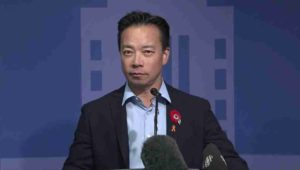
Vancouver Mayor / autocrat “play ball with me, and my office, or consequences will be severe” Ken Sim
Unlike the autocratic “if you step out of line, we’ll end you” ABC Vancouver administration of Mayor Ken Sim, the Vision Vancouver and the Non-Partisan Association Park Boards were left alone by the Boards of Directors of each long serving Vancouver political party, as well as their respective party’s colleagues / elected representatives on Vancouver City Council — free to do their jobs as they best saw fit, the jobs they had been elected to perform, unbidden and unscathed.
For part 1 of this series, click on the following link …
#SaveOurParkBoard | Tender Moments of Change at Park Board, Pt 1
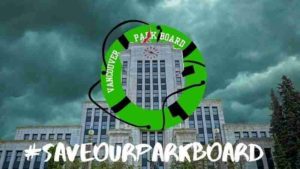 Click / tap on the graphic above to sign the Save Our Park Board Petition started by Sarah Blyth
Click / tap on the graphic above to sign the Save Our Park Board Petition started by Sarah Blyth
